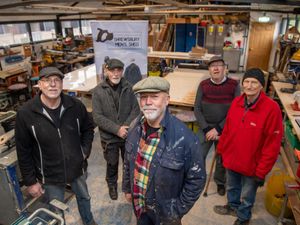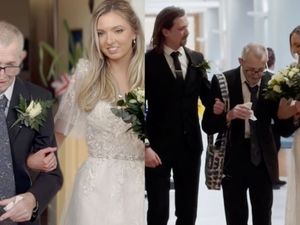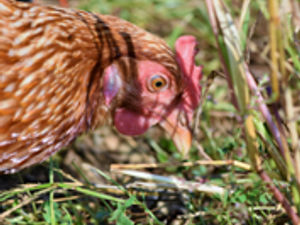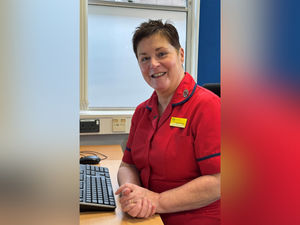International Women's Day: Honouring the Shropshire woman who became the world’s first orthopaedic nurse
International Women's Day has arrived- a worldwide event that celebrates women's achievements while calling for gender equality.
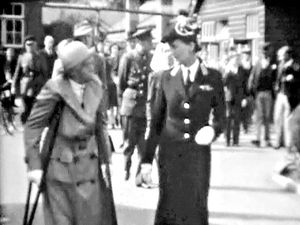
This year it is particularly important as 2018 marks the centenary of (some) women being granted the vote in the UK.
With that in mind, it is the perfect time to take a look at some of the most iconic women from history, including Shropshire's very own Agnes Hunt, the world’s first orthopaedic nurse, who helped the vulnerable and disabled and after whom Oswestry's orthopaedic hospital is named.
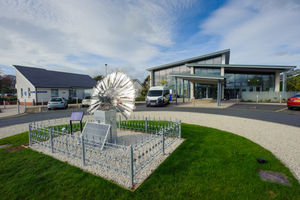
Agnes Hunt improved life for millions of people
As a youngster, Agnes Hunt would weep over her suffering. At the age of nine, a blood infection left her with a disability that caused constant pain, and made walking difficult.
But the comforting words of a clergyman gave the youngster the steely determination to overcome her condition and transform the lives of millions by becoming the world's first orthopaedic nurse.
She went on, with the help of top surgeon Robert Jones, to form what is now the Robert Jones and Agnes Hunt Orthopaedic Hospital, one of the most highly regarded centres of its kind in the county.
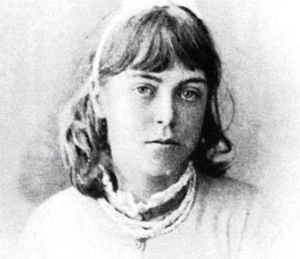
But if that were not enough, she also founded a pioneering college that would change the lives of disabled people by helping them get into work.
Today, to mark International Women's Day, Derwen College in Gobowen pays tributes to the achievements of its incredible founder.
Tonia Davies, who is marketing co-ordinator at the college, next door to the orthopaedic hospital, says Agnes was a tireless champion of the disadvantaged in society.
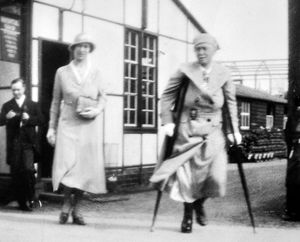
"She continually worked for those who were vulnerable in society ensuring they had opportunities to be part of their communities as other people were," says Mrs Davies.
Agnes Hunt was born on New Year's Eve in 1866, the sixth of 11 children of Rowland and Florence Hunt, and the family lived at Boreatton Park, Baschurch.
At the age of nine Agnes developed septicaemia, an infection to the blood, which even today has a risk of mortality. This infection spread to her hip resulting in osteomyelitis, an inflammatory condition of the bone.
See also:
One day, as young Agnes cried over her plight, a clergyman came into the room, and wrote in her birthday book: “Reared in suffering thou shalt know, How to solace others’ woe. The reward of pain doth lie, in the gift of sympathy.”
Dame Agnes later spoke of the effect these words would have on her life.
“The result of this talk was that I began to think I had been especially sent on earth to help other cripples. I determined to become a hospital nurse.”
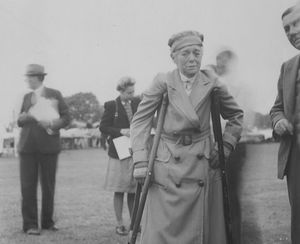
Following the death of her father, young Agnes went to live with her mother in Australia, before returning to England in 1887.
She began training as a nurse at the Royal Alexandra Hospital in Rhyl, and her early career included fighting typhoid in Rushden, Northamptonshire, and a smallpox epidemic in Middlesbrough.
It was Agnes’s mother Florence who persuaded her daughter to open a convalescent home for crippled children. Florence, a portly, formidable woman, was determined that Agnes would not be held back by her disability and was strict that she should perform all the tasks that her able-bodied brothers and sisters did.
In 1900, when Agnes was working as a district nurse, Florence decided she was going to come and live with her daughter, and proposed they should live at Florence House in Baschurch. Agnes and her close friend Emily Goodford, a fellow nurse, were to move in and set up the convalescent home, which would be an outpost for the Salop Infirmary in Shrewsbury. Florence would pay the wages and support the home.
The hospital at Rhyl had placed great emphasis on the therapeutic benefits of fresh air, as well as the value of happiness. It was felt important that the patients should have a positive attitude to their affliction. Agnes was determined that she would have the freedom that she had enjoyed as a child.
Florence House proved unsuitable as a home for disabled children because the wards were upstairs. To get around this problem, and continuing the fresh-air concept, Agnes built sheds in the grounds of the house which had only three sides, with the fourth side exposed to the elements. The benefits of fresh air had not been scientifically proven, but would have reduced the incidents of airborne coughs and colds, as well as conditions such as rickets which could be caused by a lack of sunlight.
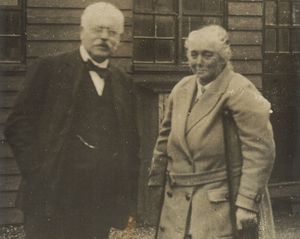
Towards the end of 1903 Agnes’s own condition had worsened to the extent that she was struggling to walk, and she went to see eminent orthopaedic surgeon Robert Jones at his surgery in Liverpool. Jones operated on her, and the two became firm friends, and Agnes invited him to see the work she was doing in Shropshire.
So impressed was Jones that he agreed to allow Agnes to bring children to him once a month for treatment. But after seeing the difficulties of transporting sick children from Baschurch to Liverpool, he agreed to become Agnes's honorary surgeon, travelling once a month to Florence House to tend to the youngsters. The convalescent home was on its way to becoming a specialist hospital, and Agnes Hunt would be its first nurse.
In the early days the dining room would serve as an operating theatre, with all the furniture removed and a fish kettle used for sterilising the equipment. But by 1907 the hospital had raised £249 to build a proper operating theatre, sterilising room and post operative ward.
By 1921, the hospital had outgrown Florence House, and moved to the former Park Hall military hospital at Gobowen, which was surplus to requirements following the end of the First World War. Funded with £27,000 from the Red Cross, this would become the present hospital site, but this was not the end of her work.
After being made a Dame in 1926, she bought a house next to the hospital called The Derwen, along with 35 acres of land, which she developed as the Derwen Cripples Training College, which enabled physically disabled people to learn a trade suitable to their disability, and become either partially or wholly self-supporting.
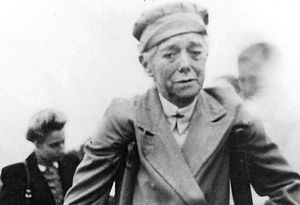
Dame Agnes continued to devote herself to Derwen until her death in 1948. Work on her final dream, a purpose-built housing scheme for the disabled, called Agnes Hunt Village, began in 1952, and the bungalows that were built are still in use today.
Mrs Davies says Dame Agnes's work has transformed the way disabled people are seen by society, and her work lives on in the college today.
"With skilled knowledge, disabled people were able to contribute to the working world and take their place in society," she says.
"Ninety one years later, the legacy of Dame Agnes is still inspiring students and staff alike at the college. "Much has changed in the field of specialist education but the values of one amazing woman still hold strong."
Eight more pioneering women who smashed the glass ceiling to do something incredible
Marie Curie
In 1903 Curie became the first woman to win a Nobel Prize in physics, following her research into radiation.
Initially, only her two male research partners were nominated, and it was only when one of them (her husband, Pierre) complained that her name was added.
Curie went on to win the Nobel Prize in chemistry in 1911 for discovering the elements radium and polonium.
Nancy Astor
While Margaret Thatcher might have been the UK’s first female prime minister, there were women who came before her that helped pave the way.
One of these was Nancy Astor, the first woman to sit in Parliament. While she wasn’t the first woman to be elected – that was Constance Markievicz, who refused the position in protest of the Government’s dealings in Ireland – she was the first to take up the seat in 1919.
Gertrude Ederle
American Ederle was the first woman to swim the English Channel. She did it on her second attempt on August 6, 1926, and it took 14 hours and 34 minutes. At the time only five men had done it before.
Amelia Earhart
‘Queen of the Air’ Earhart was the first woman to fly solo across the Atlantic in 1928 – just a year behind Charles Lindbergh, the first person ever to do so.
She also became the first person to fly solo from Hawaii to California, among many other achievements, and spent much of her career campaigning for women’s rights.
Valentina Tereshkova
On June 16, 1963, Tereshkova became the first woman in space, aged just 26. The trip on Vostok 6 saw her orbit Earth 48 times, and she was in space for over 70 hours. She carried the Olympic torch in 2008 and 2014, and remains the only woman to have ever been on a solo space mission.
Maya Angelou
The legendary poet and award-winning author is probably best known for her 1969 memoir, I Know Why The Caged Bird Sings.
It made history as the first non-fiction bestseller by a black woman. Angelou also worked as a dancer, actress, director and screenwriter after a tough childhood of sexual abuse and racial prejudice.
Libby Lane
Libby Lane managed to break conventions by becoming the first female consecrated bishop in the Church of England. Her appointment was only made possible by the Church’s General Synod voting in 2014 in favour of allowing women to become bishops.
Aretha Franklin
In 1987, Aretha became the first woman inducted into the Rock & Roll Hall of Fame. It helped solidify her reputation as the Queen of Soul, and Franklin went on to become one of the most decorated Grammy artists in history.

